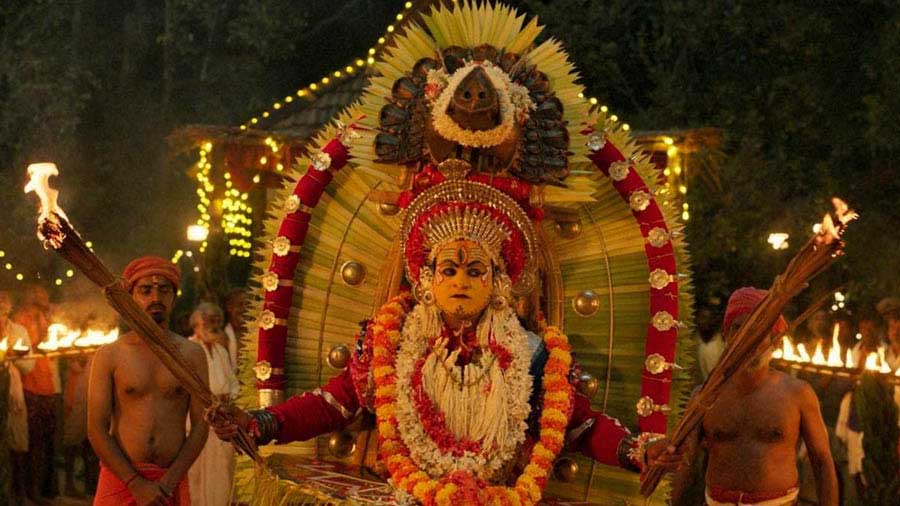“I escaped from the jaws of death five times – it is Daiva that protected me,” – the stunning disclosure from Rishab Shetty at the first media briefing of Kantara Chapter 1 even moved the media persons to some extent.
The biggest moment was seen in Kantara, released in September 2022. For this prequel, Rishab Shetty and a team of nearly 1,000 people, working day and night for 250 days, spending 5 lakh hours of manpower, not only put in sweat but even blood at times.
The pride of Indian cinema today, Rishab Shetty was, of course, very emotional when he spoke about his brainchild. Kantara Chapter 1 dates back to the 4th and 5th-century era. The unearthing of various details with a cultural backdrop happened after great research by Rishab Shetty. Although the storyline was his brainchild, professors, PhD scholars, vice-chancellors, and a few others—along with Gautham (Raviyanna of Su from So) and Anirudh Mahesh as the main writers—worked on it. It was rewritten more than 15 times before the narration was finalized and given to the production house, Hombale Films, remembers Rishab Shetty.
Taking the mic after three years to address the media, Rishab Shetty pointed out that it was a Panchavarshika Yojana with Kantara—“For this prequel, we have worked for three years. My general knowledge of the outside world has become poor. For more than three months, our team slept for only one or two hours a day.”

“I am a bit averse to people who ask ‘How are you?’ I become emotional with this question. Firstly, I feel the Daiva stood as the main pillar and got the work done. Secondly, it is my wife Pragathi Shetty’s Harake that saved me. On some days, when I was shooting risky shots, I told my colleagues to change the timing of Pragathi’s arrival on the sets. She took care of the home, children, and used to come to the sets right on time. She is also the main costume designer of the film, and her work was essential in every shot captured,” says Rishab Shetty.
The next most important person during the making of the film was cinematographer Aravind Kashyap. “For whatever I told, he would give an improvised version for the best outcome.”
All such solid and sincere work needs the able support of a producer. Hombale Films’ Vijay Kiragandur was always perfect and precise. “He never disturbed us on any day or at any time for anything. We may use our brain and energy, but to make it happen, Hombale Films is the right production house for dreams to conquer,” observes Rishab Shetty.
Some mishaps and accidents happened during the shooting. “It was very frustrating. That was all part of the process. However, it is a loss. If all this is taken into account, it is a great miracle that I came out alive. If God had not stood by and guided me, it would have been very difficult. There are no words to describe it all.”
Rishab Shetty, filled with emotion, says in a nutshell: “One thing is for sure—this is a powerful and strong film. I vouch that everyone will feel proud after watching the cinema Kantara Chapter 1. For the first time, I feel my energy has truly been tested.”
The entire Kundapura became like a mini film city. Places like Mudiru, Keradi, and Kundapura in Karnataka received great support from the state forest department. “We went to places where it is not even possible for human beings to enter, just for shooting.” Kalaripayattu, which is in fact Garadi Pettu, is also focused on in this film. The stunt team included director Juni from Bulgaria, and Ram-Lakshman, Mithun Mathew, and Arjun as the main stunt directors.
“The Kannada audience all over supported my earlier film, and this Kantara Chapter 1 is totally for them,” says Rishab Shetty. “Avarinda Avarigaagi.”

